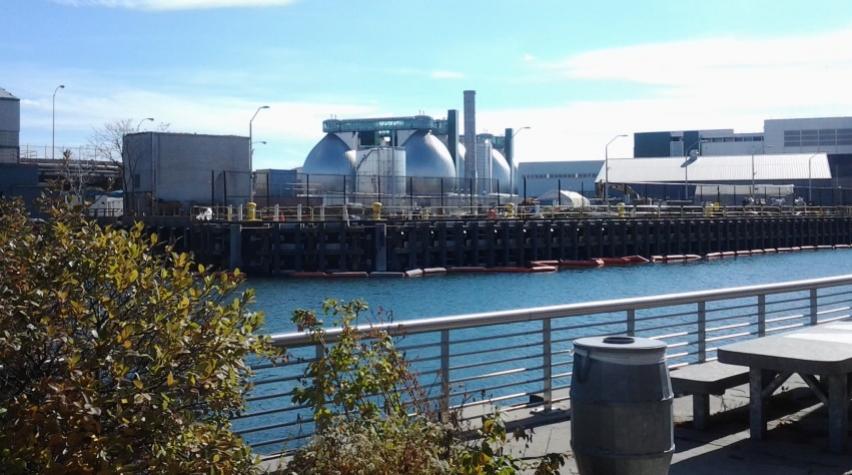
By Peter Greenberg via Wikimedia Commons
The expanded Newton Creek wastewater treatment plant is one of New York City's oddest and most striking attractions. Visible from vantage points in Brooklyn, Queens and Manhattan, tourists flock to see the plant's eight futuristic, stainless steel-clad digester eggs, which process 1.5 million gallons of sludge every day. After breaking down the sludge inside, the digesters produce 3 million cubic feet of gas daily. While 40 percent of that gas heats and maintains the temperature in the digester eggs, any unused gas is cleanly flared off and, for all practical purposes, lost. But that is about to change. Soon, under a new city program, Waste Management, the city's garbage hauler, will deliver re-processed organic food waste collected from 200 public schools, predominately in Brooklyn, to the treatment plant, where it will be mixed in with wastewater sludge to help boost the production of biogas. Then National Grid, the local utility, will convert the methane-rich biogas into clean, pipeline-quality natural gas that will be used to heat homes and businesses across the five boroughs. If the pilot program is a success, food waste would be collected from an additional 200 schools along with 100,000 homes across the city. This new program is geared to reduce the mountains of waste currently shipped to costly out-of-state landfills, while also curbing annual greenhouse gas emissions by 90,000 metric tons. Two articles about the stainless steel used in the project.
Is biogas production the future of waste treatment?
Log in to post comments


